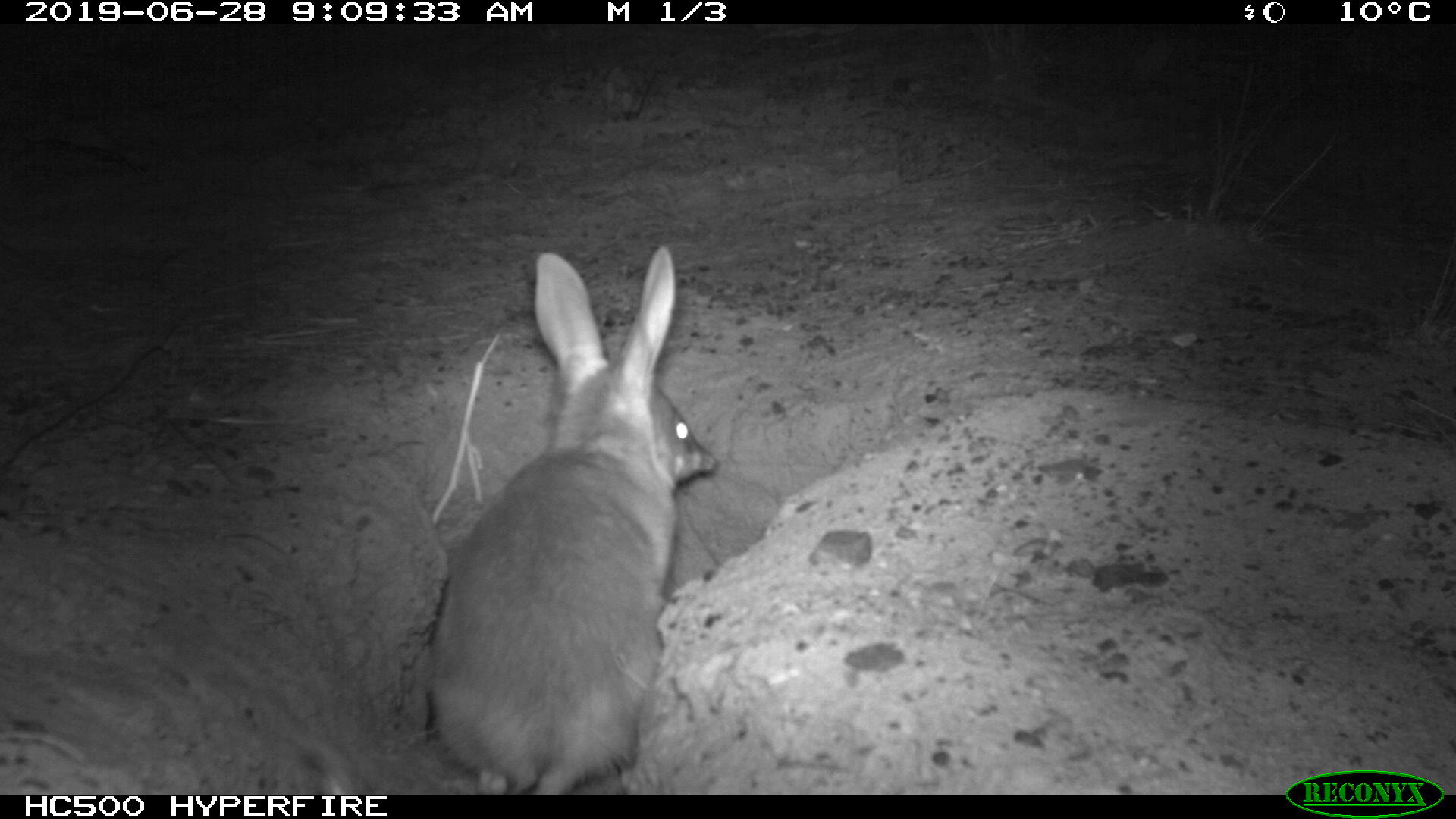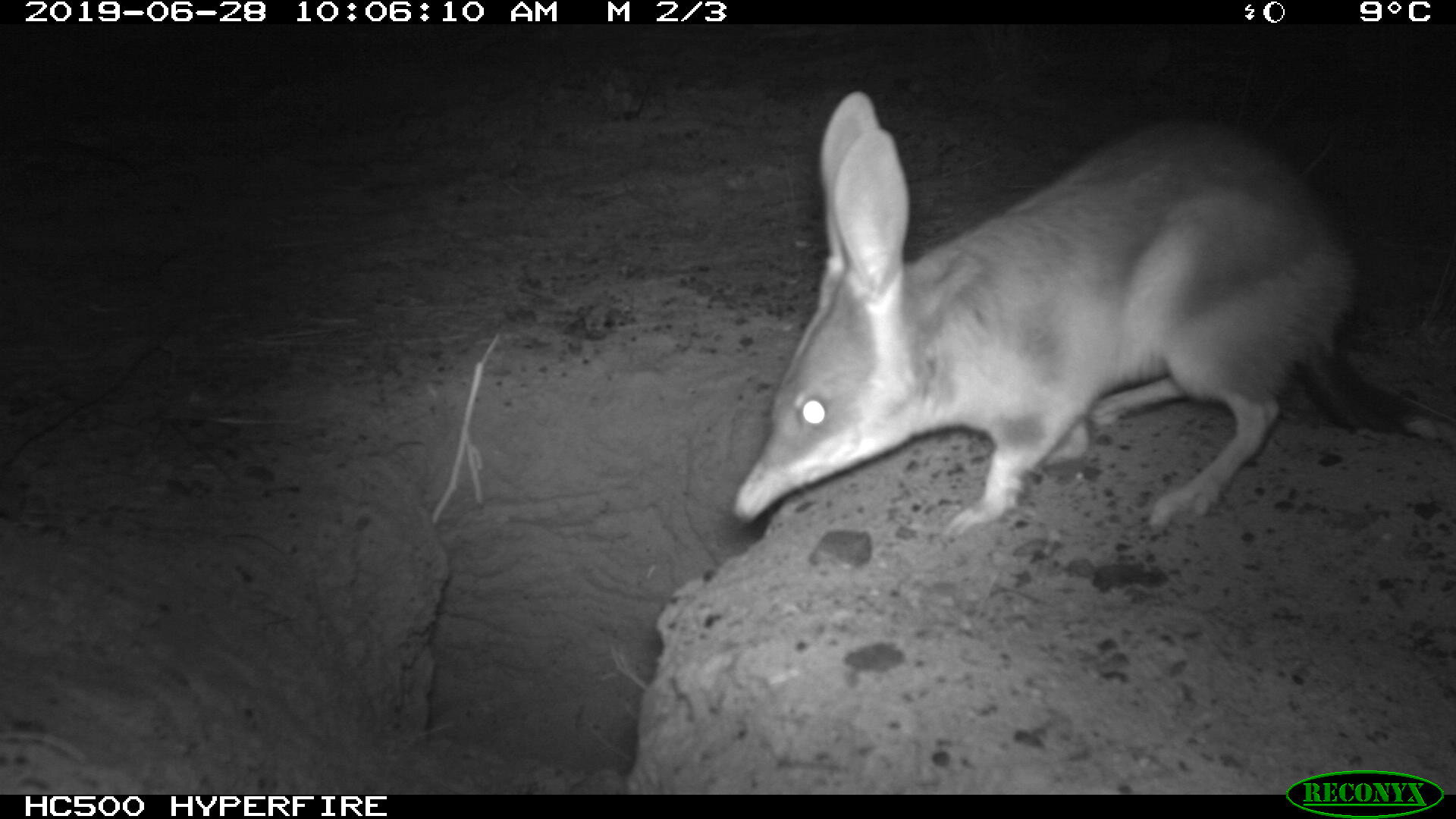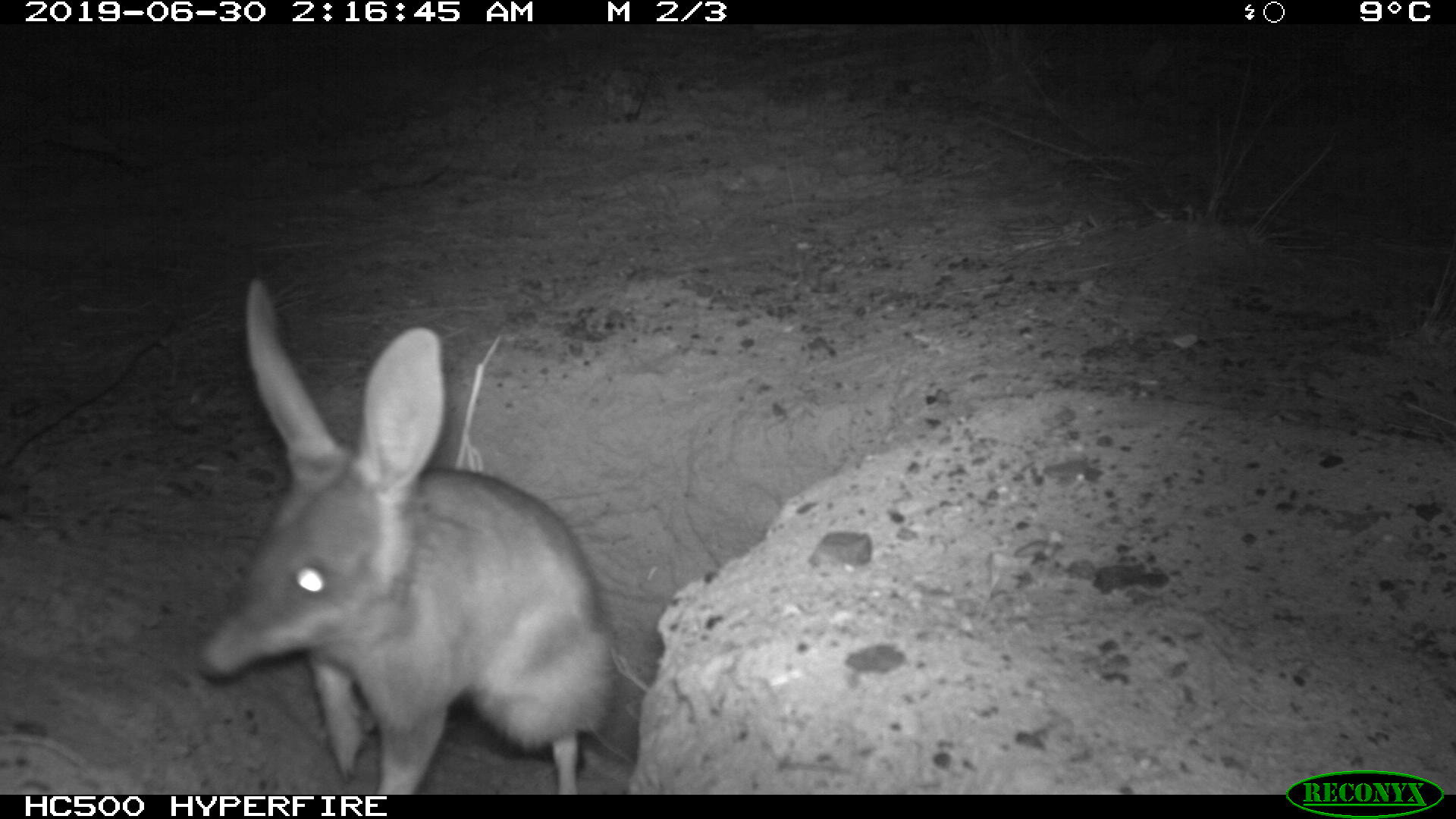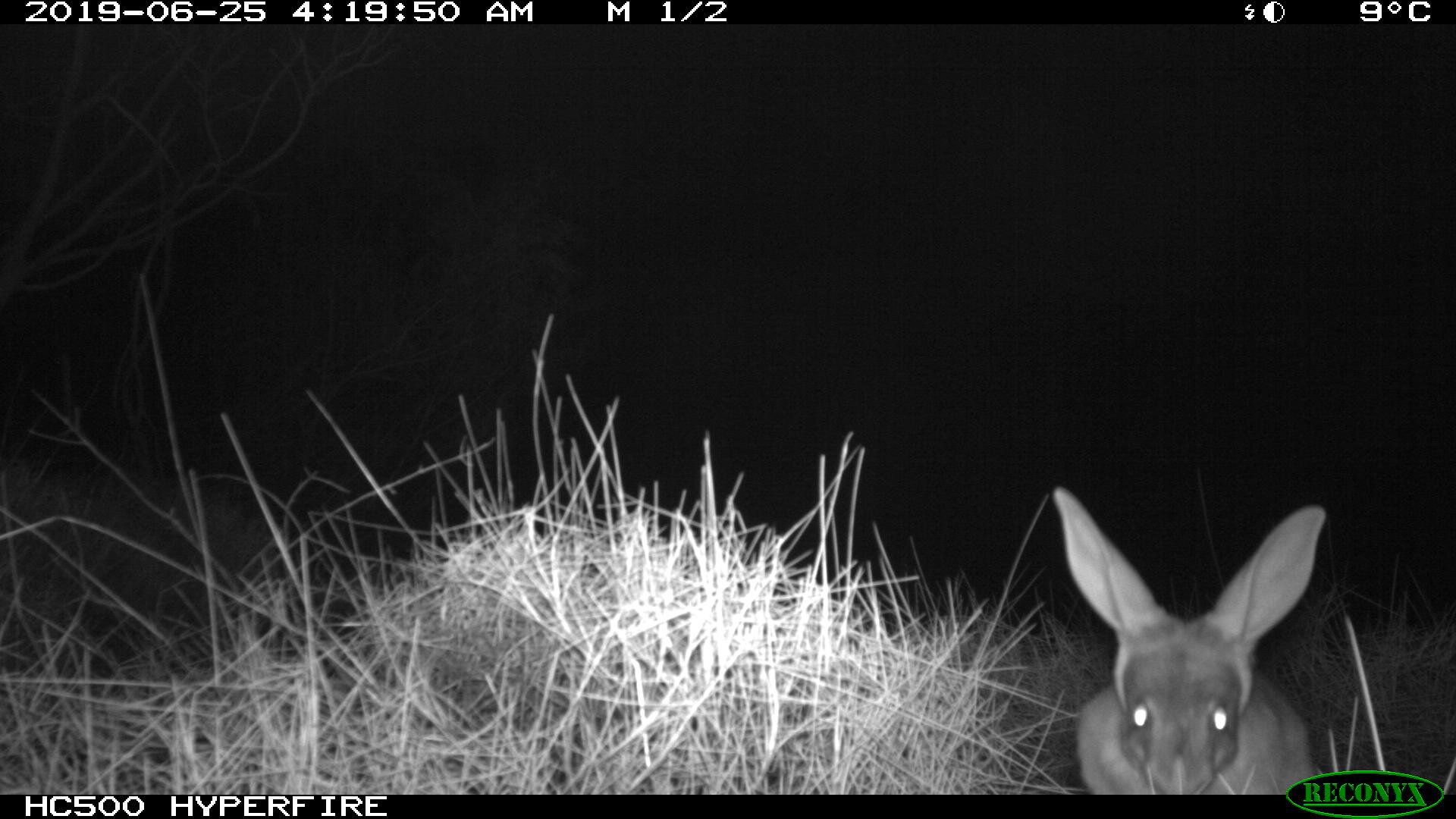Tracking Mankarr in the Little Sandy Desert
KJ rangers have partnered with Threatened Species Recovery Hub scientists to design a monitoring program for mankarr (the greater bilby). Martu identified priorities for the bilby monitoring program, then worked with Dr Anja Skroblin from the University of Melbourne to co-develop a monitoring method.
Deep in the Little Sandy Desert, Martu walked with purposeful footsteps, weaving their way between clumps of spiky green spinifex, fanning out across the sandplain. Eyes were to the ground, reading the small indents, scrapes and scratches in the sand that reveal the movement of animals that visited over the preceding days.
And then, the tracks the rangers had been looking for: the distinctive pattern left by the bounding-overstep motion of the mankarr. There are diggings into the roots of acacias here — the mankarr must have had a meal of witchetty grubs. Over there, nestled under a clump of old spinifex, the footprints lead to the opening of a mankarr burrow.
Maybe the mankarr is asleep in there now? But maybe not … The rangers are worried. Right there alongside the mankarr tracks are fresh tracks of a large feral cat, a predator of the mankarr. It also visited that burrow last night.
Over time, the monitoring program will detect trends in the bilby populations, so that Martu will know if numbers are fluctuating — if at all. Additional information will be collected on the distribution of bilby food plants, threatening feral species (cats, foxes and rabbits) and the impact of fire patterns. These findings will then be used to support KJ rangers in their management decisions — such as fire and predator control.
Partners
This project is a collaboration between The University of Melbourne, Kanyirninpa Jukurrpa and The Nature Conservancy and is supported by BHP and the Threatened Species Recovery Hub of the Australian Government’s National Environmental Science Program, the Department of Prime Minister and Cabinet, Parks and Wildlife Services, and Rangelands NRM Western Australia.








